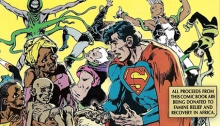“The Question” of Revision; Or the Difficult Case of Renee Montoya
Dr. Vincent Haddad examines both an issue of the brilliant new The Other History of the DC Universe series and O’Neil and Cowyn’s classic 1980s run on The Question, considering both the limits and promise of revision.




















